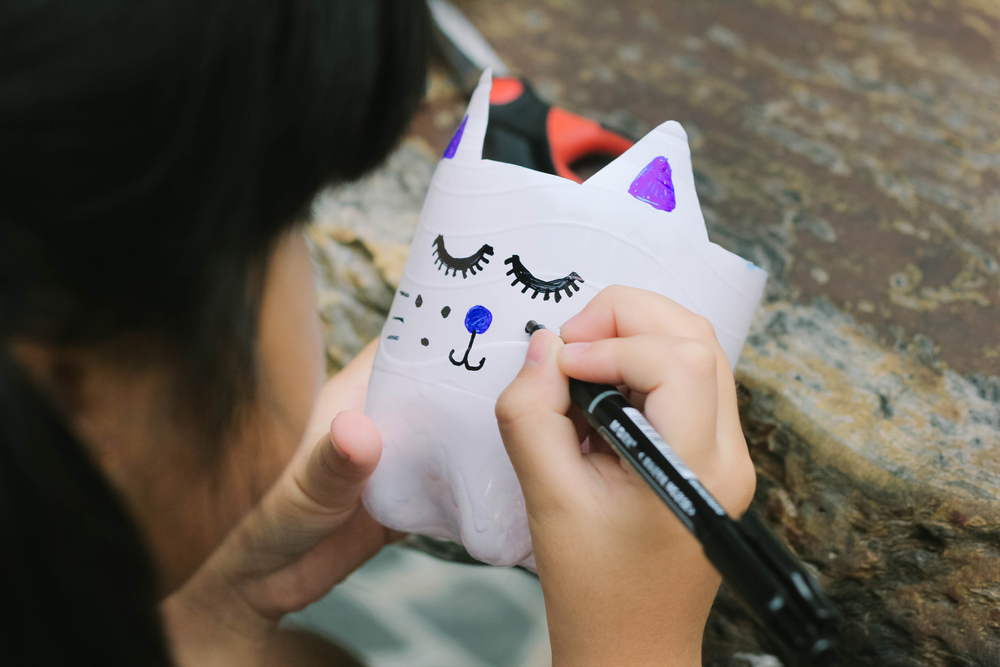Understanding seasons Seasons Worksheets for Ages 5-7
5 filtered results
-
From - To
Welcome to our "Understanding Seasons" worksheets for ages 5-7! Designed to captivate young minds, these engaging activities introduce children to the four seasons—spring, summer, autumn, and winter. Our thoughtfully crafted resources encourage exploration of seasonal changes in weather, nature, and daily life. Kids will love colorful illustrations and interactive exercises that promote critical thinking and creativity while enhancing their observational skills. Ideal for both classroom use and at-home learning, our worksheets provide a fun way for children to connect with the natural world. Help your child discover and appreciate the beauty of each season with our educational resources!
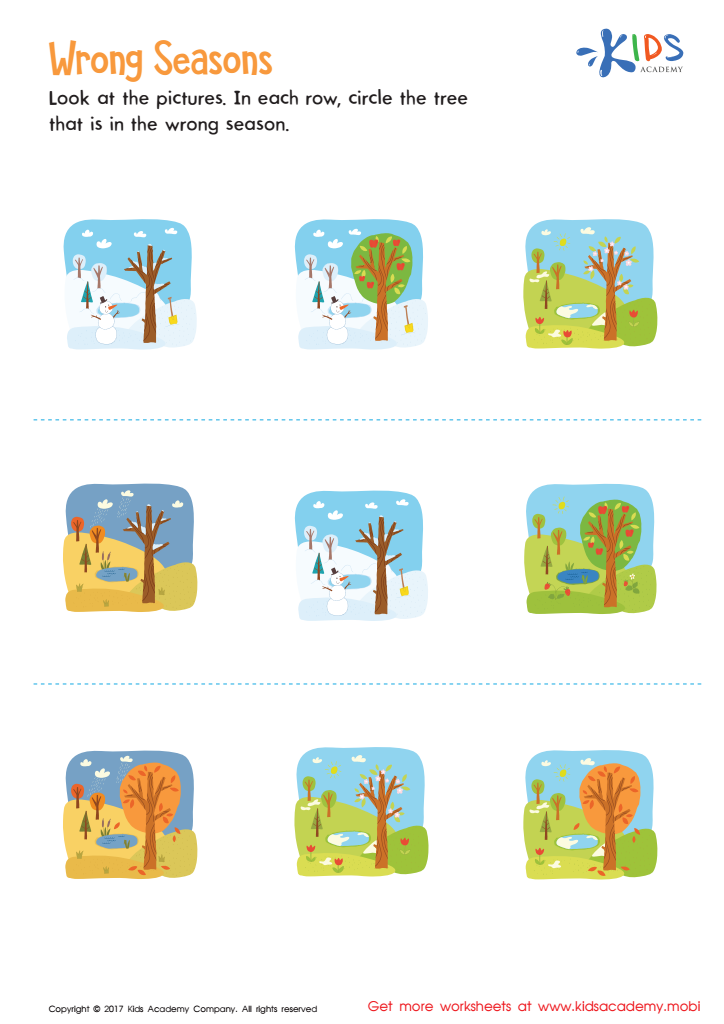

Wrong Seasons Worksheet
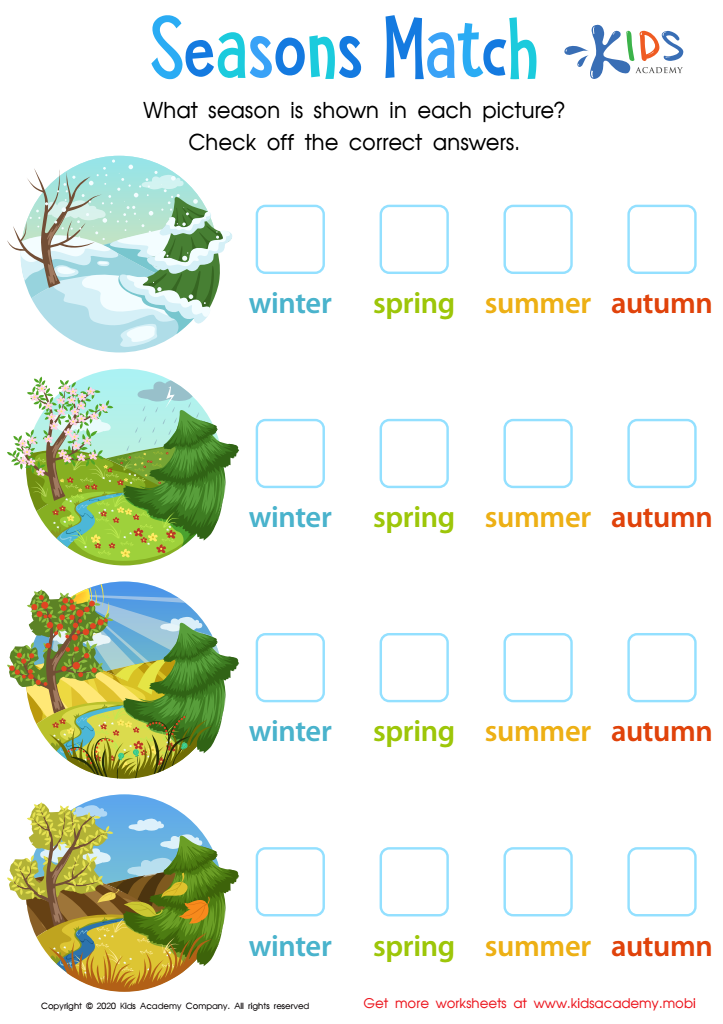

Seasons Match Worksheet
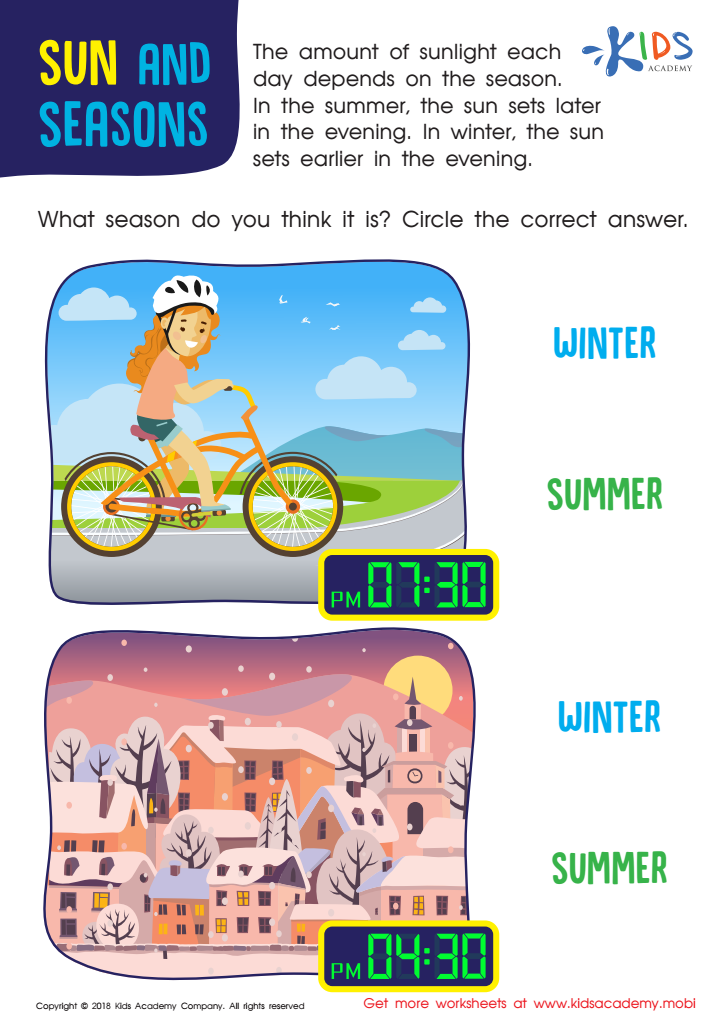

Sun and Seasons Worksheet
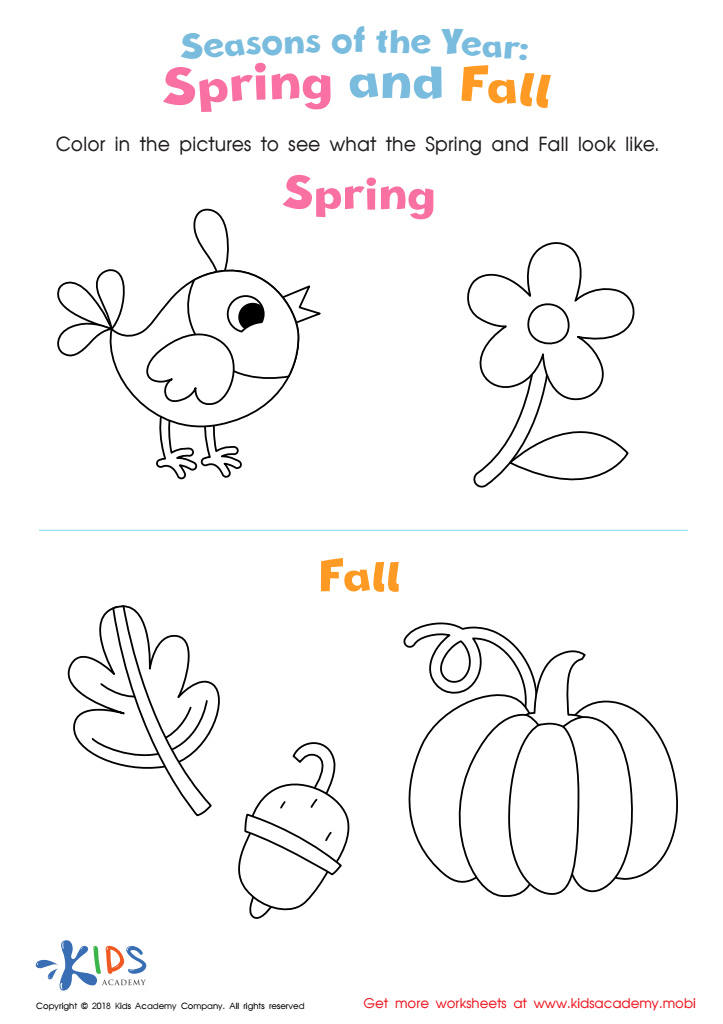

Spring and Fall Worksheet
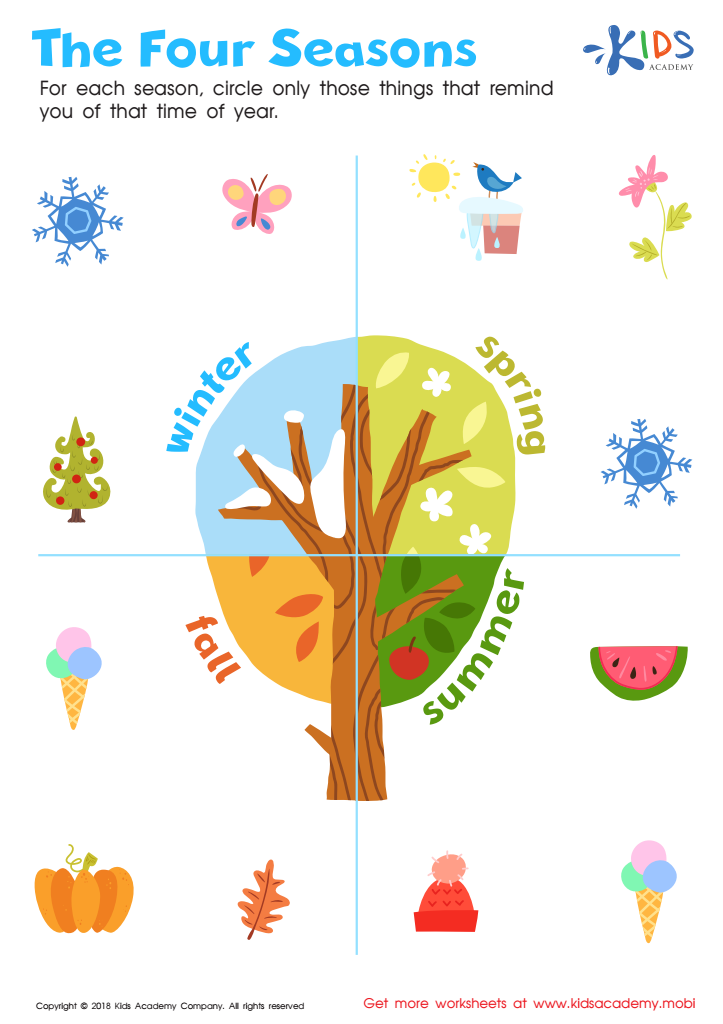

The Four Seasons Worksheet
Understanding seasons is vital for children aged 5-7 as it shapes their comprehension of the world around them. First, it fosters a connection with nature; children learn to observe changes in their environment, such as differing weather patterns, foliage changes, and animal behaviors. This awareness cultivates observational skills, critical thinking, and curiosity, encouraging outdoor exploration.
Moreover, learning about seasons integrates scientific concepts, helping children grasp basic principles like climate and ecosystem interdependence. These fundamental lessons in biology and Earth science lay a strong foundation for future academic pursuits.
Additionally, understanding seasons can enhance emotional development. Seasonal changes often bring various holidays and cultural festivities, allowing children to explore traditions and nuances of their communities. This promotes social awareness and respect for diversity.
From a practical perspective, recognizing seasonal cues helps children adapt their daily routines, dress appropriately, and understand concepts of time. By learning about seasons, parents and teachers help cultivate adaptive skills and resilience in young learners.
Ultimately, this knowledge enriches children’s lived experiences, fosters a sense of wonder, and encourages stewardship of the environment, equipping them for a lifetime of curiosity and learning.

 Assign to My Students
Assign to My Students





%20(1).jpg)
